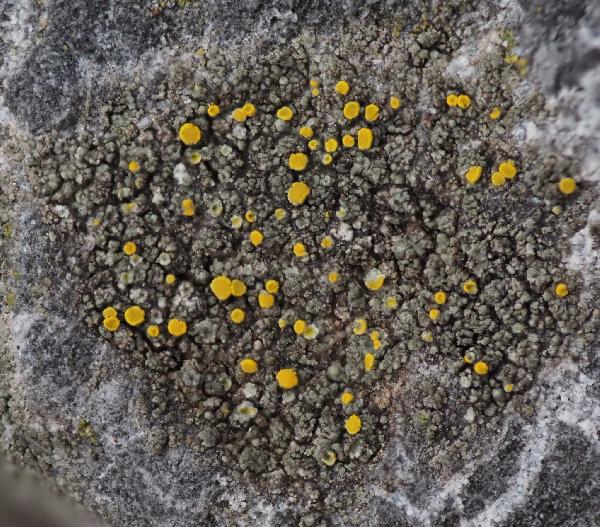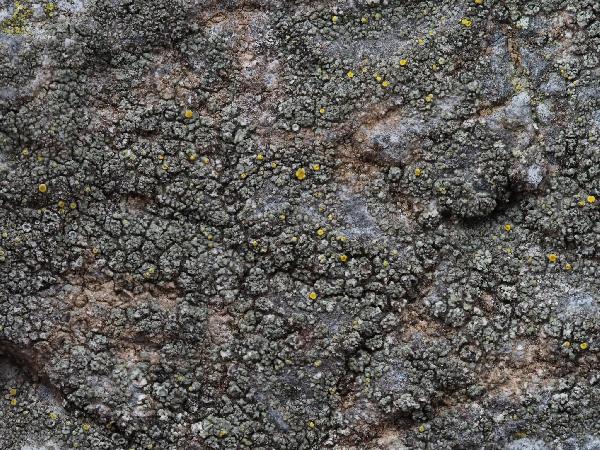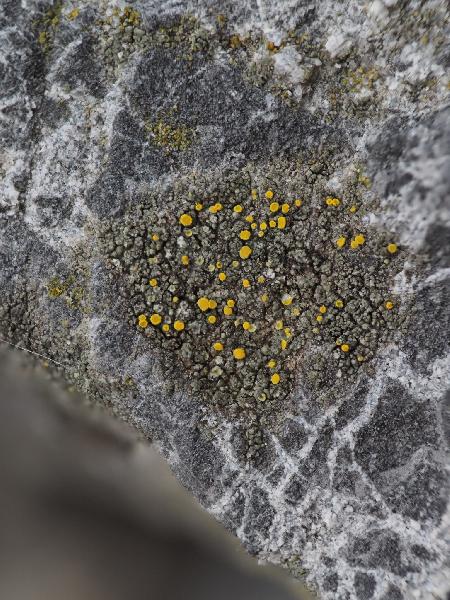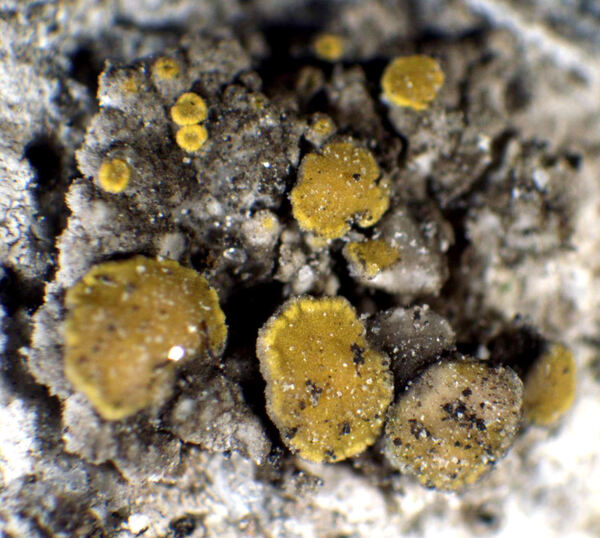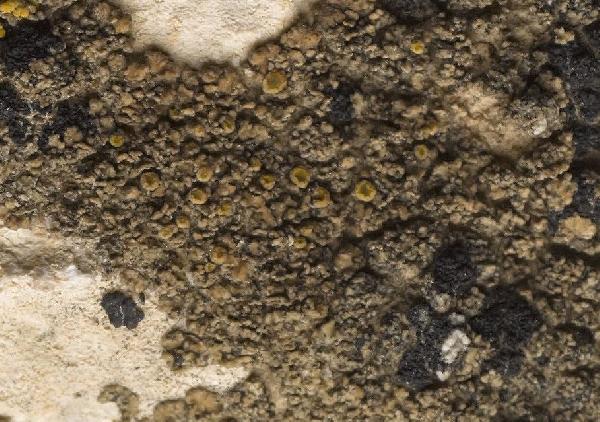Candelariella plumbea Poelt & Vězda
Folia Geobot. Phytotaxon., 11: 89, 1976.
Synonyms:
Distribution: N - Frl, Ven (Nimis 1994), Piem (Clerc & al. 1999), VA (TSB 29456). C - Abr (Nimis & Tretiach 1999).
Description: Thallus (which might belong to a host lichen) crustose to subsquamulose, lead-grey to almost black in sun-forms, to 1 mm thick, firmly attached with a strongly constricted basis. Marginal squamules to 1 mm long and wide, more or less deeply divided, usually weakly convex; inner squamules smaller, some of them ascending and sometimes forming coarse, 0.1-0.25 wide isidia-like outgrowths. Cortex of hyphae running parallel to the surface, overlain by a thick epinecral layer and underlain by a paraplectenchymatous tissue. Apothecia lecanorine, immersed in the thallus, 0.5-1(-1.5) mm across, round to usually undulate, with a flat to weakly convex, yellow to ochre-yellow disc, a thick, yellow proper margin, and a grey thalline margin often visible on the flanks of young apothecia. Exciple paraplectenchymatous, in upper part inspersed with minute brownish yellow crystals; epithecium yellow, granular; hymenium colourless, c. 60 µm high; paraphyses 2-3 µm thick at the base, the terminal cells swollen and up to 5 µm thick. Asci 8-spored, clavate, with an apical dome which is I+ blue only in the internal, lower part, interrupted in the centre by an I+ paler blue strip, Candelaria-type. Ascospores 1-celled, ellipsoid, hyaline, straight or slightly curved, 13-18(-20) x 4.5-6 µm. Photobiont chlorococcoid. Spot tests: thallus K-, C-, KC-, P-; apothecia K- or K+ reddish-orange, C-, KC-, P-. Chemistry: apothecia with pulvinic acid derivatives. Note: a lichen found on nutrient-enriched, more or less calcareous rocks wetted by rain in exposed habitats, often developing along small cracks; see also note on . C. oleaginescens.
Growth form: Crustose
Substrata: rocks
Photobiont: green algae other than Trentepohlia
Reproductive strategy: mainly sexual
Commonnes-rarity: (info)
Alpine belt: extremely rare
Subalpine belt: extremely rare
Oromediterranean belt: absent
Montane belt: very rare
Submediterranean belt: very rare
Padanian area: absent
Humid submediterranean belt: absent
Humid mediterranean belt: absent
Dry mediterranean belt: absent
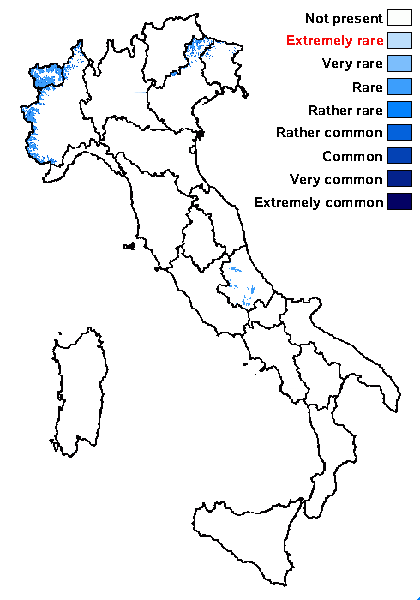
Predictive model
Herbarium samples
Growth form: Crustose
Substrata: rocks
Photobiont: green algae other than Trentepohlia
Reproductive strategy: mainly sexual
Commonnes-rarity: (info)
Alpine belt: extremely rare
Subalpine belt: extremely rare
Oromediterranean belt: absent
Montane belt: very rare
Submediterranean belt: very rare
Padanian area: absent
Humid submediterranean belt: absent
Humid mediterranean belt: absent
Dry mediterranean belt: absent

Predictive model
| Herbarium samples |
 INDEX FUNGORUM
INDEX FUNGORUM
 GBIF
GBIF
 DOLICHENS
DOLICHENS
